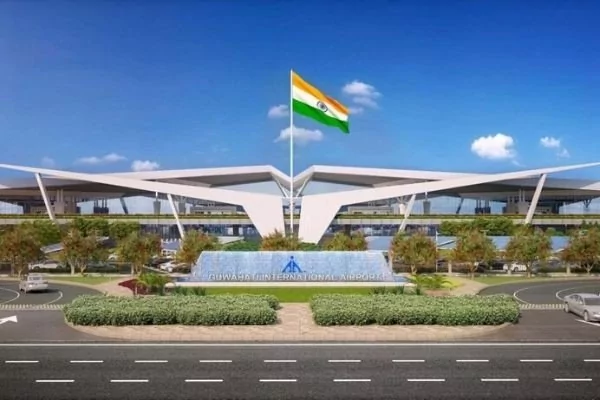4 Great things I see emerging from Airport Authority of India’s BIM advocacy
November 24, 2019

India is one of the fastest-growing nations in the world. The infrastructure development taking place in the country drives this growth. All around us, India is experiencing major infrastructural advancements and transformative projects which will become key success drivers. And the aviation sector could be next in line for the infrastructure transformation.
One of the challenges for the growth of the aviation sector has been providing connectivity to the smaller centres and improving the facilities in locations that have outgrown their current scale. And that’s why modern airports are being planned across the country.
We need modern technologies to fuel this airport boom and build the infrastructure of the future. Some of the best airports worldwide have used advanced innovations like BIM and it’s the right time for India to adopt this best practice to realize the nation’s vision in infrastructure development.
For the benefit of the folks tasked with planning these airports and who happen to read this piece, a bit of explanation first. Building Information Modelling (BIM) is a multi-dimensional visual representation of the design beyond the traditional 2D representations. By baking in dimensions of time, project status, and cost, BIM has the ability to bring together various disciplines involved in the planning and design, execution, and maintenance phases of construction projects. BIM is, of course, highly useful for building a structure that involves critical design.
But clearly, this definition is not needed. And that’s what this post is all about.
With a solid focus on innovation and a focus on advanced technology, the Airport Authority of India (AAI) has mandated the use of BIM as the design and planning platform for the construction and development of airports.
An airport includes various facility elements that must be constructed. The work includes civil, MEP, landscape, and interiors. Multiple areas need attention like the runway, control tower, and terminal buildings. The focus must be on utility as well as appearance. Hence the design is complex in nature. And the comprehensive model of BIM makes it come together beautifully. The integrated approach of BIM facilitates a better understanding of workflows and facilitates the creation of an effective timeline with negligible errors. And I say this based on our previous experience of having working on the BIM models for the Mumbai International Airport.
Here are some great things I see emerging from this decision of the AAI.
1. The use of BIM will help enhance collaboration across the entire project from design, creation, and construction to operations and maintenance. BIM will centralize access to the data model and let the project team members at multiple sites leverage the data models regardless of their physical location. This will also let team members see each other’s work and communicate with one another in real-time. BIM will help to better visualize the design for the air terminal for all those involved in the planning and construction. This will help them plan better for upcoming tasks and ensure that the appropriate resources are available in time. This should allow projects to get delivered on time.
2. Airports cost a lot of money to build. A massive amount of materials and resources are poured into that construction. And, it’s also true that a significant portion of that is wasted. Problems like over-ordering are common. Under-provisioning for key materials is also not unknown. This leads to having to order materials in smaller quantities, with urgent timelines which often costs more. Clearly, efficient estimations of the materials required can help save a pretty penny. And BIM can provide just that efficiency.
3. The use of BIM will minimize clashes between teams working on different areas like plumbing and electrical. This will help reduce rework and minimize errors. This should result in greater cost consistency, improve plan execution and design optimization. From being able to collaborate in the design, early planning, to construction and operations, BIM can brings together all the pieces of the puzzle. With thousands of people working on the site, communication at scale is important. It will enable everyone to review the master model, see each other’s concerns; conflicting elements; inaccurate or missing structure components, and critical zones, both for coordination and installation. This will help save time as well as money.
4. BIM will help optimize the upcoming maintenance tasks of the facility by providing a reliable base structure to define management plans. This will make maintenance more proactive, sustained and comprehensive. This could help make airport operations more efficient and trouble-free once launched. This is of critical importance when you consider the sheer volume of moving parts that come together every day in even the smallest airport. This can also help make the ongoing airport operations more energy-efficient and, hence, more environmentally friendly. In fact, this focus on sustainability can be built in right at the design stage by focusing on integrating energy efficiency in the structure.
BIM, when implemented from the first stage makes it simpler to build, transform or reconstruct (a part of) an existing structure.
The decision to utilize BIM will enable better plan and construction efficiency, reduce cost, and could also deliver a more positive impact on the environment. The creation of the nation’s air terminals with the added power of BIM could well set new benchmarks for various upcoming airport infrastructure projects everywhere.














